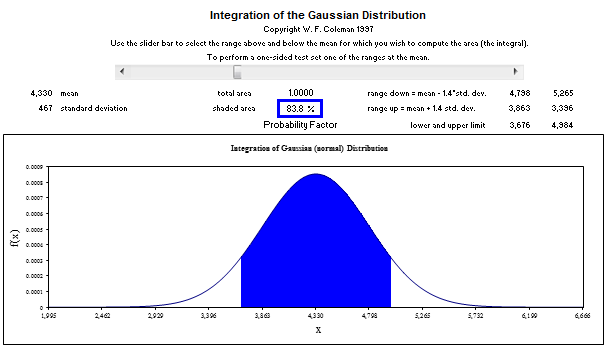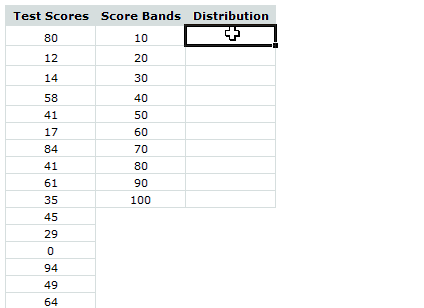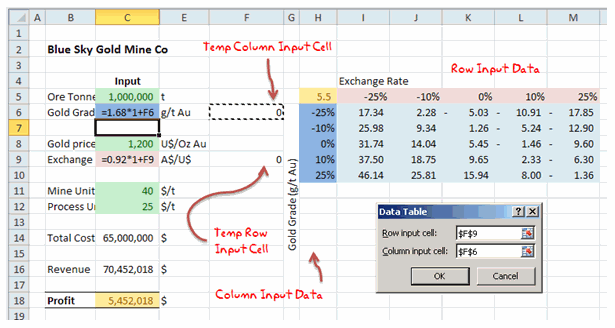One of the most dreaded courses during my under-graduation is Probability, Statistics & Queuing Theory. We called it PSQT. I struggled to understand the significance and concept of this course as I could barely concentrate in the class. We had a professor, who is probably a genius, but the moment he started the class, I would magically fall in to one of my after-noon naps. When I woke up, we are either in the middle of an elaborate t-test or going thru intricacies of a Markovian queue.
This was all 11 years ago. Later in life, I have embraced the world of probability & statistics. I still fear queues. May be I will get there one day. 😉
A good understanding of statistics & probability theory is necessary if you want to model complex real-life problems using Excel or similar tools. Naturally, Excel has several functions, features & supported add-ins to help you in this area.
Today, I want to share some of this with you. This article is broken down in to 3 parts.
- Learning Statistics & Probability using Excel
- Downloadable Excel Workbooks to understand
- Full blown models & simulations in Excel
#1 – Learning Statistics & Probability Concepts using Excel
Using Excel RAND functions
Excel has several powerful functions (formulas) to generate random numbers, random data. You can combine these functions to generate data that has certain parameters – like a give mean, standard deviation or follows a certain type of distribution.
Go thru Using Excel’s Random Functions for a detailed overview these techniques.
Simulating Dice Throws in Excel
One of the fundamental ways to learn about Probability is to look at dice throws. A dice has 6 faces and on each throw, any of the 6 faces turning up is equally likely. So, we say, each face has 1/6th probability of showing up. If you want to simulate this in Excel, you can use the formula RANDBETWEEN like this, =RANDBETWEEN(1,6). On each run, this formula would throw up a random number between 1 & 6 (including both).
For more, Simulating Dice Throws in Excel
Shuffling a List of Values in Excel
Understanding permutations and combinations is essential when it comes to modeling many real-world problems. Using Excel’s RAND, VLOOKUP and SMALL formulas we can generate a random permutation of a given list of values (in other words – we can shuffle the list).
To learn this read, Shuffling a list of values in Excel
Generate Frequency Distribution from Data
Often, when you are analyzing data, you need to understand how the data is distributed. Again, Excel has just the right function for this sort of thing. FREQUENCY(). In this simple tutorial, learn how to use Excel’s FREQUENCY formula to generate frequency distribution of given data.
Read Frequency Distributions in Excel
Trend Analysis & Forecasting using Excel
One of the most common applications of statistics is trend analysis & forecasting. Again, Excel shines with a lot of powerful formulas, built-in features and charting tools to help you understand the data & predict future based on that.
Since this is a big topic, we have covered it in 3 parts –
Part 1- Introduction to Trend Analysis & Forecasting: In this, we will learn what is trend analysis & forecasting. We will see manual forecasting technique in Excel. We will use Excel charts to depict our analysis and results.
Part 2 – Trend Analysis & Forecasting using Excel Functions
In this second part, we learn about Excel’s functions like LINEST, TREND, FORECAST, SLOPE, INTERCEPT, LOGEST and GROWTH. These powerful formulas can process lots of data and extract the trend information dynamically.
Part 3 – Trend Analysis & Forecasting using Charts & Macros
In the final part, we talk about how to use Excel chart’s trend analysis & forecasting features to estimate the trend & predict future values based on the data.
We also learn how to use Macros (VBA) to augment Excel chart’s trend-lines with useful information.
Visualizing Distribution of data with Box Plots
Box plots are an excellent way to understand the distribution of data. Unfortunately, there is no direct option to make a box plot from given data in Excel. That is where, this tutorial comes handy.
Learn how to create box plots in Excel.
#2 Downloadable Excel Workbooks
Learn Basic Statistics & Gaussian Distribution using this Excel Workbook
Glen, one of our long time readers shared this file with me. It lets you perform statistical analysis, quality control analysis, visualize Gaussian distribution based on the data you enter.
Click here to download the workbook.

Thanks Glen.
More Downloadable Workbooks
Almost all of the links in this page will take you to detailed articles on Chandoo.org, where you can also find downloadable workbook with examples. So just click thru and learn. 🙂
#3 Full blown models & simulations in Excel
A full blown model lets you learn various statistical concepts, Excel features and how to bring them all together to mimic a real-life situation.
Simulating Deal or No Deal game in Excel
In this simulation of Deal or No Deal, a popular television game, we use basic probability, permutations and Excel formulas features. You will learn how to assign random values to the suit-cases, how to use circular references, how to calculate the banker’s offer.
Simulation of Deal or No Deal game in Excel
Generating Housie / Bingo Tickets in Excel
Housie (Bingo) is a popular recreational game where the tickets contain 15 numbers between 1 to 90, arranged in 10 columns (3×10 grid). First column has numbers between 1 to 9, second column has 10 to 19 so on..
Generating a bingo ticket in Excel is a nice exercise in statistics, permutations and Excel formulas.
Learn from Bingo / Housie Tickets in Excel
Data Tables & Monte Carlo Simulations in Excel
Excel has powerful features to let us do complex simulations of real world situations. One such feature is called as data table.
The Data Table allows a set of what if questions to be posed and answered simply, and is useful in sensitivity analysis, variance analysis and even Monte Carlo (Stochastic) analysis of real life model within Excel.
The case of Blue Sky Mining Company
To help you learn about data tables, Monte Carlo simulations, we have put together a fictional mining company – Blue Sky co. and analyzed its performance under various assumptions & simulations.
To learn about this, visit Data Tables & Monte-Carlo Simulations page.
Modeling & Scheduling a FIFO (First In First Out) Queue in Excel
FIFO queues are very common in life. You can see them at Airports, coffee shops, Apple stores; Except at Airports it is FIFOUYC (FIFO Unless You are Crew).
In this article, we model & schedule a FIFO queue using Excel.
More Full Blown Models & Simulations in Excel
For more examples, check out these links.
- One more example of Data Table & Linest
- Simulating 3D dancing pendulums in Excel
- Simulating Monopoly Board Game in Excel
Do you use Statistical Concepts for your work?
As a small business owner, a good portion of my work involves statistical analysis, forecasting and simulation. I run estimates for our website traffic, revenues. I run statistical tests (split tests etc.) to optimize our sales pages, website. I estimate when my kids wake up from their nap (based on past experience) and plan my work accordingly. Thankfully, for the last part, I do not use Excel 😀
What about you? Do you use statistical concepts for your work? What are the things you use and how does Excel help you in that? What are your favorite formulas, features and tips? Please share using comments.
Special thanks to Hui & Glen
Many thanks to Hui, our resident Excel ninja for writing many of the articles on statistics, simulation, forecasting & trend analysis.
Special thanks to Glen for sharing the analyze-this file with us.
Say thanks to them if you enjoyed this.


























21 Responses to “How to Filter Odd or Even Rows only? [Quick Tips]”
Infact, instead of using =ISEVEN(B3), how about to use =ISEVEN(ROW())
So it takes away any chance of wrong referencing.
I like Daily Dose of Excel
I like it.
Just a heads up, you do need to have the Analysis ToolPak add-in activated to use the ISEVEN / ISODD functions. An alternative to ISEVEN would be:
=MOD(ROW(),2)=0
rather than use a formula, couldn't you enter "true" in first cell and "false" in the second and drag it down and than filter on true or false.
Just for clarification, is Ashish looking to filter by even or odd Characters or rows?
so many functions to learn!
Nice support by chandoo and team as a helpdesk. Give us more to learn and make us awesome. Always be helpful.......
In case you want to delete instead of filter,
IF your data is in Sheet1 column A
Put this in Sheet2 column A and drag down
=OFFSET(Sheet1!A$1,(ROWS($1:1)-1)*2,,)
(This is to delete even rows)
To delete odd rows :
=OFFSET(Sheet1!A$2,(ROWS($1:1)-1)*2,,)
If your numbered cells did not correspond to rows, the answer would be even simpler:
=MOD([cell address],2), then filter by 0 to see evens or 1 to see odds.
I sometimes do this using an even simpler method. I add a new column called "Sign" and put the value of 1 in the first row, say cell C2 if C1 contains the header. Then in C3 I put the formula =-1 * C2, which I copy and paste into the rest of the rows (so C4 has =-1 * C3 and so forth). Now I can just apply a filter and pick either +1 or -1 to see half the rows.
Another way, which works if I want three possibilities: in C2 I put the value 1, in C3 I put the value 2, in C4 I put the value 3, then in C5 I put the formula =C2 then I copy C5 and paste into all the remaining rows (so C6 gets =C3, C7 gets =C4, etc.). Now I can apply a filter and pick the value 1, 2, or 3 to see a third of the rows.
Extending this approach to more than 3 cases is left as an exercise for the reader.
Another way =MOD(ROW();2). In this case, must to choose betwen 1 and 0.
[...] How to Filter Even or Odd rows only [...]
very different style Odd or Even Rows very easy way to visit this site
http://www.handycss.com/tips/odd-or-even-rows/
Thanks for the tip, it worked like magic, saved having to delete row by row in my database.
Thanks!
Thankssssssssssssssss
Hi Chandoo- First of all thanks for the trick. It helped me a lot. Here I have one more challenge. Having filtered the data based on odd. I want to paste data in another sheet adjacent to it. How can I do that?
For Example-
A 1 odd
B 3 odd
C 4 even
D 6 even
I have fileted the above data for odd and want to copy the "This is odd number" text in adjacent/next sheet here. How can I do that. After doing this my data should look like this
A 1 odd This is odd number
B 3 odd This is odd number
C 4 even
D 6 even
Hi! Could you please help me find a formula to filter by language?
Thank you!
Chandoo SIR,
I HAVE A DATA IN EXCEL ROWS LIKE BELOW IS THERE ANY FORMULA OR A WAY WHERE I CAN INSTRUCT I CAN MAKE CHANGES , MEANS I WANT TO WRITE ONLY , THE FIG IS FRESH, BUT IN BELOW ROW IT WILL AUTOMATICALLY TAKE THE SOME WORDS FROM FIGS AND MAKE IN PLURAL FORM , WHILE USING '' ARE'' LIKE BELOW
The fig is fresh - row 1
Figs are fresh - row 2
The Pomegranate is red - row 3
Pomegranates are red - row 4
=IF(EVEN(A1)=A1,"EVEN - do something","ODD - do something else") with iferron (for blank Cell)